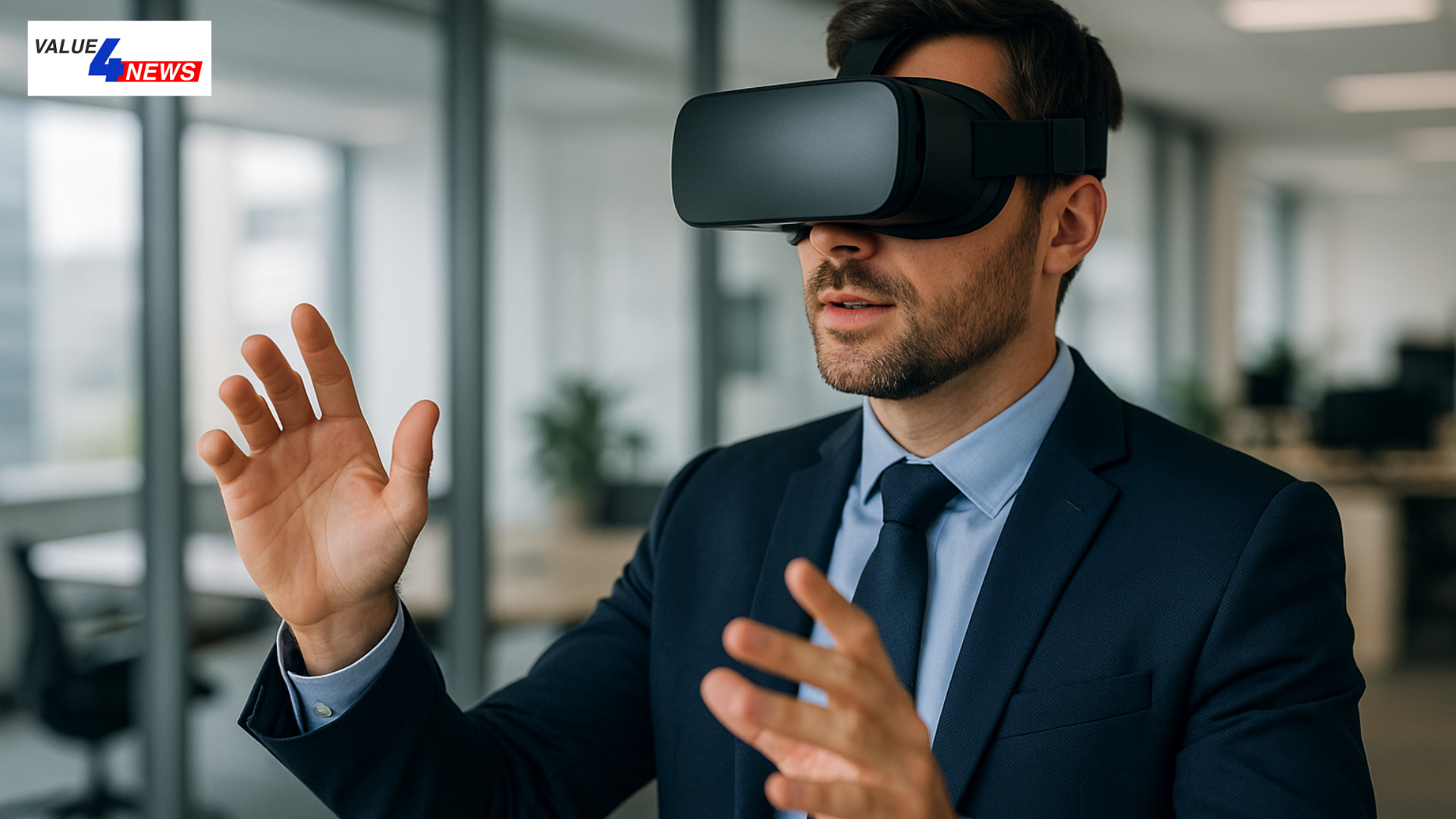Virtual reality is one of the most innovative technologies of the modern epoch which have crossed the borders of fiction not long ago. The area of virtual reality is adding new depths to how we associate with the digital environs, be it reshaping the gaming experience, reimagining academics, or reshaping work.
Before getting to know about applications and characteristics of virtual reality it is important to understand its meaning and how it differs or relates to similar technologies such as augmented reality.
What is Virtual Reality?
Virtual reality (VR) refers to the simulated, computer-derived setting that one can engage in just like in real life. Applying VR headsets, gloves, and motion sensors, users have the fullest image of the 3D virtual reality, and they can generally move their heads and look, walk, and, in many cases, handle virtual features.
Virtual reality aim is to generate a realistic, involving experience through which the digital and the physical dissolve to the point of people able to visit outer space or recreation of history in the comfort of the home or office.
How can a Virtual Reality Work Meeting be held?
The remote working environment is quickly changing, where virtual reality work meetings are one of the interesting developments.
How does one virtual reality work meeting work? People put on VR devices and find themselves in a common virtual environment (a 3D-rendered office or conference room, e.g.) and communicate through avatars. They are able to exchange presentations, think on digital whiteboards, and even learn to read gestures and facial expression of their interlocutor.
The given approach is not merely innovative: it is dealing with actual problems such as Zoom fatigue, decreased interaction, and the absence of face-to-face experience. Virtual meetings are more interactive and create a stronger level of collaboration- particularly to globally scattered groups of employees.
How Does the Room Scale Mode of Virtual Reality Work?
The third innovation in the VR arena is the so-called room scale mode that was introduced in the VR world where the user can literally move around in a specified play area and the system calculates his/her movements and activities live.
How then does room scale mode of VR operate? The VR device tracks your physical location using outside sensors or in-built tracking devices and converts your signal in your real-life space into the virtual world. When you move forward in your room you will see the same on the VR environment as your avatar will move forward. This paints an excellent boost to the feeling of immersion and interactivity.
The technology is particularly potent in such spheres as in games, physical therapy, and training simulations where spatial awareness and movement is an essential attribute.
The Emerging Influence of Virtual Reality in All the Industries
As the VR technology becomes less expensive and overall more affordable, its use continues to grow by leaps and bounds in various sectors. Pain management and surgical simulation have already been realized via virtual reality healthcare in situations where a simulation of pain is required or in surgical discussions where a simulation of the surgery is needed. In mental health, virtual reality is being applied in the treatment and management of mental disorders via virtual reality therapy. In education there is the possibility to study the ancient civilizations or to make the virtual experiments in the science area within the totally active environment. In the meantime, real estate agents are taking part in online tours of the property and manufacturing businesses are employing VR to train employees and create safety training training. These practical examples demonstrate that virtual reality is not only redefining our entertainment industry, it is also changing the mode of learning, healing, creation, and communication.
VR and the Future of the Social Interaction
However, besides enterprise and learning, virtual reality is transforming our social and interactive lives. Such platforms as VRChat, Horizon Worlds, and others develop social environments that are much more realistic and allow users around the world to engage in a social setting as they look like avatars. Engagements that range anywhere between virtual concerts to online birthday parties extend well beyond ordinary video chats. Digital identities and common spaces are changing; therefore, VR can construct more profound and emotionally compelling online societies. This new social revolution reveals that virtual reality is not only about realities-it is about relationship between human beings in the age of digitalization.
Conclusion
Immersive gaming and remote collaboration to medical training and more, the future is becoming a whole new world with Virtual Reality. Learning what they mean by virtual reality and analyzing the distinction between the augmented reality and the virtual reality, as well as immersing in the innovative phenomena such as the room scale movement and the virtual meetings, it is apparent that the VR is not just a fashion but it is our future.
With more industries applying VR, augmented reality vs virtual reality debate is only getting more prominent with both having specific advantages based on the application.
Regardless of whom you are: a tech-savvy or a business leader, or a learning-hungry expert, there is no better time when you can enter the virtual world to feel its power to the fullest.



